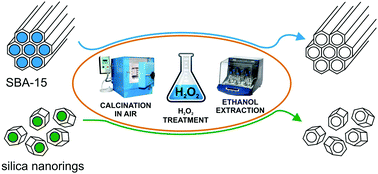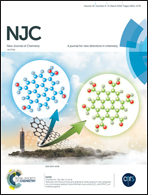Template removal from mesoporous silicas using different methods as a tool for adjusting their properties
Abstract
Removal of the surfactant template is the final step in the synthesis of silica-based mesoporous materials. This step influences the properties of the final sample, including porosity, surface chemistry and ordering. In this work, three methods: (i) calcination, (ii) extraction and (iii) treatment with hydrogen peroxide are applied to remove the polymeric template from two types of mesoporous materials: ordered SBA-15 and silica nanorings. The results show that the three above-mentioned methods lead to materials with different properties as indicated by nitrogen sorption measurements, elemental analysis, FTIR, NMR and electron microscopy. The content of carbon in the final samples also differs testifying to variations in the efficiency of template removal. The detemplating scheme influences not only the structural and chemical properties but also the adsorption performance of the materials. The adsorption uptakes of L-histidine vary largely depending on the number of silanol groups remaining on the surface after detemplation. Thus, template removal should be considered not only as the last necessary step in the synthesis of mesoporous silicas but also as a tool for tailoring the properties of the final structures.



 Please wait while we load your content...
Please wait while we load your content...